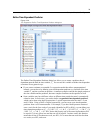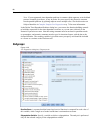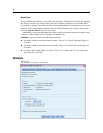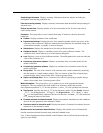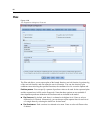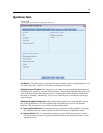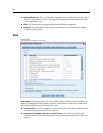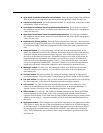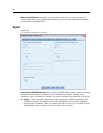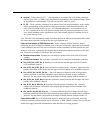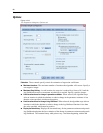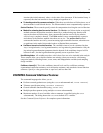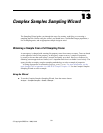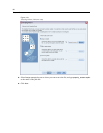
87
Complex Samples Cox Regression
Upper bound of confidence interval for survival function. Saves the upper bound of the confidence
interval for the survival function at the observed time and predictor values for each case.
Cumulative hazard function. Saves the cumulative hazard, or −ln(survival), at the observed time
and predictor values for each case.
Lower bound of confidence interval for cumulative hazard function . Saves the lower bound of
the confidence interval for the cumulative hazard function at the observed time and predictor
values for each case.
Upper bound of confidence interval for cumulative hazard function. Saves the upper bound of
the confidence interval for the cumulative hazard function at the observed time and predictor
values for each case.
Predicted value of linear predictor. Saves the linear combination of reference value corrected
predictors times regression coefficients. The linear predictor is the ratio of the hazard function
to the baseline hazard. Under the proportional hazards model, this value is constant across
time.
Schoenfeld residual. For each uncensored case and each nonredundant parameter in the
model, the Schoenfeld residual is the difference between the observed value of the predictor
associated with the model parameter and the expected value of the predictor for cases in
the risk set at the observed event time. Schoenfeld residuals can be used to help assess the
proportional hazards assumption; for example, for a predictor x, plots of the Schoenfeld
residuals for the time-dependent predictor x*ln(T_) versus time should show a horizontal
line at 0 if proportional hazards holds. A separate v ariable is saved for each nonredundant
parameter in t he model. Schoenfeld residuals are only computed for uncensored cases.
Martingale residual. For each case, the martingale residual is the difference between the
observed censoring (0 if censored, 1 if not) and the expectation of an event during the
observation time.
Deviance residual. Deviance residuals are martingale residuals “adjusted” to appear more
symmetrical about 0. Plots of deviance residuals against predictors should reveal no patterns.
Cox-Snell residual. For each case, the Cox-Snell residual is the expectation of an event during
the observation time, or the observed censoring minus the martingale residual.
Score residual. For each case and each nonredundant parameter in the model, the score
residual is the contribution of the case to the first derivative of the pseudo-likelihood. A
separate variable is saved for each nonredundant parameter in the model.
DFBeta residual. For each case and each nonredundant parameter in the model, the DFBeta
residual approximates the change in the value of the parameter estimate when the case is
removed from the model. Cases with relatively large DFBeta residuals may be exerting undue
influence on the analysis. A separate variable is saved for each nonredundant parameter in
the model.
Aggregated residuals. When multiple cases represent a single subject, the aggregated residual
for a subject is s imply the sum of the corresponding case residuals over all cases belonging
to the same subject. For Schoenfeld’s residual, the aggregated version is the same as that of
the non-aggregated version because Schoenfeld’s residual is only defined for uncensored
cases. These residuals are only available when a subject identifier is specified on the Time
and Event tab.



